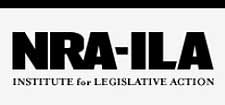
U.S.A. -(AmmoLand.com)- For observers familiar with Canada’s long-gun registry, Prime Minister Justin Trudeau’s scheme to implement his “assault weapons” ban is already giving off a whiff of déjà vu.
Under the Trudeau government’s ban and confiscation program announced on May 1, over 1,500 firearms and devices listed in a government regulation immediately became a “prohibited” firearm or “prohibited device,” as did “any variants or modified versions.”
The law includes a two-year “amnesty” period ending April 30, 2022. A “regulatory impact analysis statement” released with the gun ban regulation states: “During the amnesty period, the Government intends to implement a buy-back program to compensate affected owners for the value of their firearms after they are delivered to a police officer; however until a buy-back program is offered, affected owners will not be eligible for compensation. An option to participate in a grandfathering regime would also be made available for affected owners. Further public communications on the buy-back program and the grandfathering regime will follow later.” In the meantime, use of the banned firearm or device is almost completely prohibited.
The problems began almost immediately. The law had a much broader reach than advertised, as it became known that the RCMP was adding, as “prohibited,” over a thousand firearms that weren’t directly mentioned in the May regulation. Gun rights groups also questioned the validity of standards in the regulation based on a firearm’s bore diameter or the muzzle energy in discharging a projectile.
It is now apparent that the government had no implementation plan in place at the time the May gun ban took effect, as it wasn’t until August that private contractors were reportedly contacted for expressions of interest in administering the so-called “buyback” (Notice of Proposed Procurement” on “Compensation Model and Program Design Options for a Potential Buyback Program for Recently Prohibited Firearms,” No. 202101502).
The Notice had an initial “Phase One” deadline of March 31, 2021 – almost a year into the amnesty period. Phase One covers the theoretical program design and the development of “compensation model options,” but “does not include initiating the delivery of the buy-back program.”
As of late September, no contractor has been announced and the details of the confiscation program and “grandfathering” option remain a complete blank.
A news source quotes a spokesperson’s evasive hedging on the timing and whether the program will even be operational by the time the amnesty expires: “While it is the government’s intent to bring a buy-back program forward during the amnesty period, it is too early to devise with a degree of precision the exact timelines against which such a program would run.”
Another huge question mark is the economic fallout of the gun ban. One initial estimate of the “buyback” program cost topped out at a maximum of CDN$600 million. The “regulatory impact analysis statement” is less forthcoming, stating only that “the costs associated with implementing a buy-back program and grandfathering regime have not yet been finalized.” It adds that the ban will have additional unknown costs due to the economic impact on small businesses, manufacturers, sport shooting, and hunting (hunting alone “contributes an estimated $4.1 billion to Canada’s GDP as well as $2 billion in labor income, and supports about 33,313 full-time equivalent jobs”).
Canadians have already paid heavily for one failed Liberal experiment in gun control. The notorious national gun registry that took effect in 1998 was promised to cost taxpayers no more than CDN$2 million. In 2002, the federal Auditor General’s report predicted that by 2005, the costs to the Department of Justice alone would be 500 times that amount, over $1 billion. Besides the stupendous cost overruns, her report identified additional, serious concerns with the gun registry.
First and foremost, the federal Department of Justice did not “provide Parliament with sufficient information to allow it to effectively scrutinize” the program and ensure accountability, and provided insufficient information to explain “the dramatic increase” in the program costs.
Funding assumptions were “unrealistic,” and the financial information disclosed did not fairly represent the government’s program costs. The costs to comply incurred by provinces, territories, firearm owners, firearm clubs, manufacturers, sellers, importers, and exporters of firearms were not reported and not included.
Significantly, the program had become “excessively regulatory.” This “excessive focus on regulation and control” was explained by the fact that some “Program partners believed that the use of firearms is in itself a ‘questionable activity’ that required strong controls, and that there should be a zero-tolerance attitude towards non-compliance…”
In the end, the registry – with no discernible public benefit-cost Canada’s taxpayers at least $2.7 billion before it was discontinued by Stephen Harper’s Conservative government in 2012.
Asked about the registry in 2012, Justin Trudeau could do no less than call it a “failure.”
With a ballooning federal deficit and an economy struggling to cope with the COVID pandemic, anxious Canadians are right to be concerned about the Liberals’ track record and the lengths to which they will go to turn Canada into their version of a gun control utopia.

About NRA-ILA:
Established in 1975, the Institute for Legislative Action (ILA) is the “lobbying” arm of the National Rifle Association of America. ILA is responsible for preserving the right of all law-abiding individuals in the legislative, political, and legal arenas, to purchase, possess and use firearms for legitimate purposes as guaranteed by the Second Amendment to the U.S. Constitution. Visit: www.nra.orgwd
The post Canada’s Gun Confiscation Program: Past is Prologue appeared first on AmmoLand.com.
from https://ift.tt/3n63nW6
via IFTTT

No comments:
Post a Comment